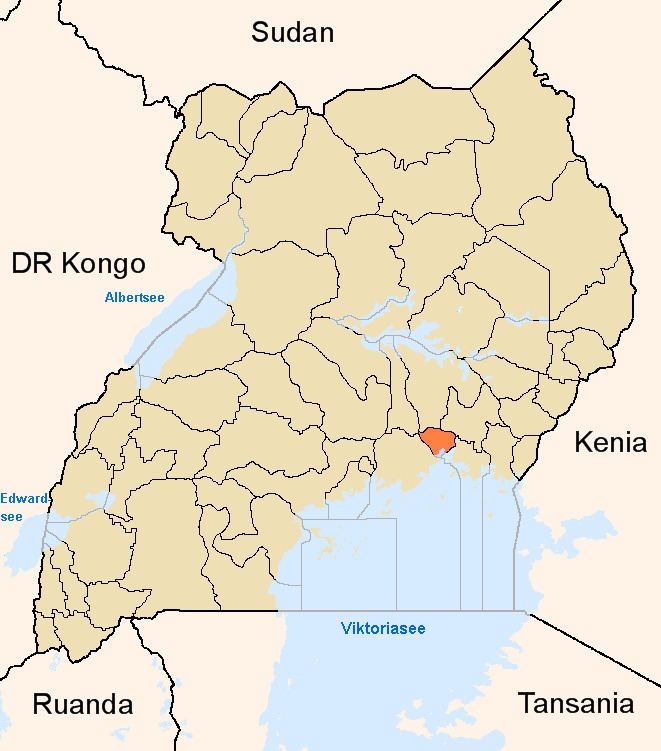Length 77.1 km | ||
 | ||
History: Designation expected in 2017Completion expected in 2025 | ||
The Kampala–Jinja Expressway, also known as the Jinja–Kampala Expressway, is a proposed four-lane toll highway in Uganda, linking Kampala, the capital and largest city of Uganda, with the town of Jinja in the Eastern Region of Uganda.
Contents
Location
The expressway will start at Nakawa, a neighborhood in Nakawa Division in the eastern part of Kampala, go through Namanve and Mukono in Mukono District, and end at the New Jinja Bridge in Njeru. The entire expressway will be a four-lane, dual carriageway, with limited access.
Overview
The current Kampala-Jinja Highway, highway A109 on the map, forms part of the Northern Corridor of the Trans-Africa Highway, linking the Indian Ocean port of Mombasa, Kenya with the Atlantic Ocean port of Matadi, Democratic Republic of the Congo (DRC). The section of A109 between Jinja and Kampala is the busiest and most congested road in Uganda. It is the main import/export route for land-locked Uganda, Rwanda, Burundi, and eastern DRC. The 77 kilometres (48 mi) expressway will pass to the south of the existing Kampala–Jinja Highway and is planned as a toll-road.
In 2010, the Ugandan government engaged the World Bank as transaction adviser. They hired Integrated Transport Planning (ITP), a United Kingdom-based transportation consulting firm, to conduct feasibility studies and road design. A core investor will be identified who will build, own, and operate the toll road for 25 years from the date of commissioning. This public-private-partnership (PPP) arrangement will be used on three other planned expressways, leading in and out of the nation's capital. Trademark East Africa, an affiliate of ITP, will provide oversight support to the Uganda National Roads Authority (UNRA) in the management of PPP preparation, procurement, and implementation.
History
Construction was expected to begin in 2015, with commissioning planned for 2020. The expressway will be a toll-road, with vehicles that use it needing fittings with electronic billing devices. The construction contract will be awarded once the core investor in the toll road is identified and approved.
The exact cost of the project has not been finalized. Estimates have varied from UGX:800 billion to a high of UGX:5.5 trillion (US$1.5 billion).
In June 2014, the UNRA selected the International Finance Corporation as lead transaction advisor to assess the potential to develop the 77 kilometres (48 mi) expressway on a public private partnership basis. Spea Engineering was hired to assist UNRA select one or more investors to design, build, finance, and operate the expressway. In July 2014 at the Financing Summit for Africa's Infrastructure that took place in Dakar, Senegal, the Common Market for Eastern and Southern Africa (COMESA) identified the expressway as a priority project, one of the six infrastructure projects to be developed before 2020. COMESA allocated US$74 million in funding towards its development.
Recent developments
In June 2016, the government of France, through the French Development Agency (AFD), agreed to lend €180m (Shs667 billion) to the Ugandan government, towards the construction of this toll expressway. Construction is planned to begin in 2017.
